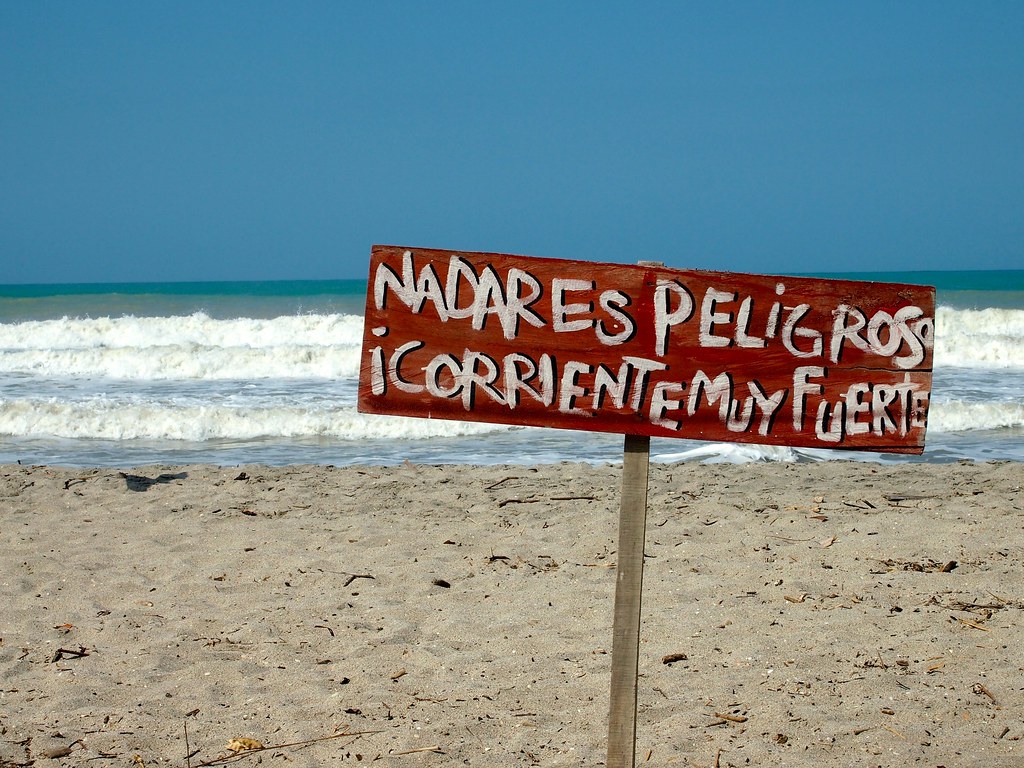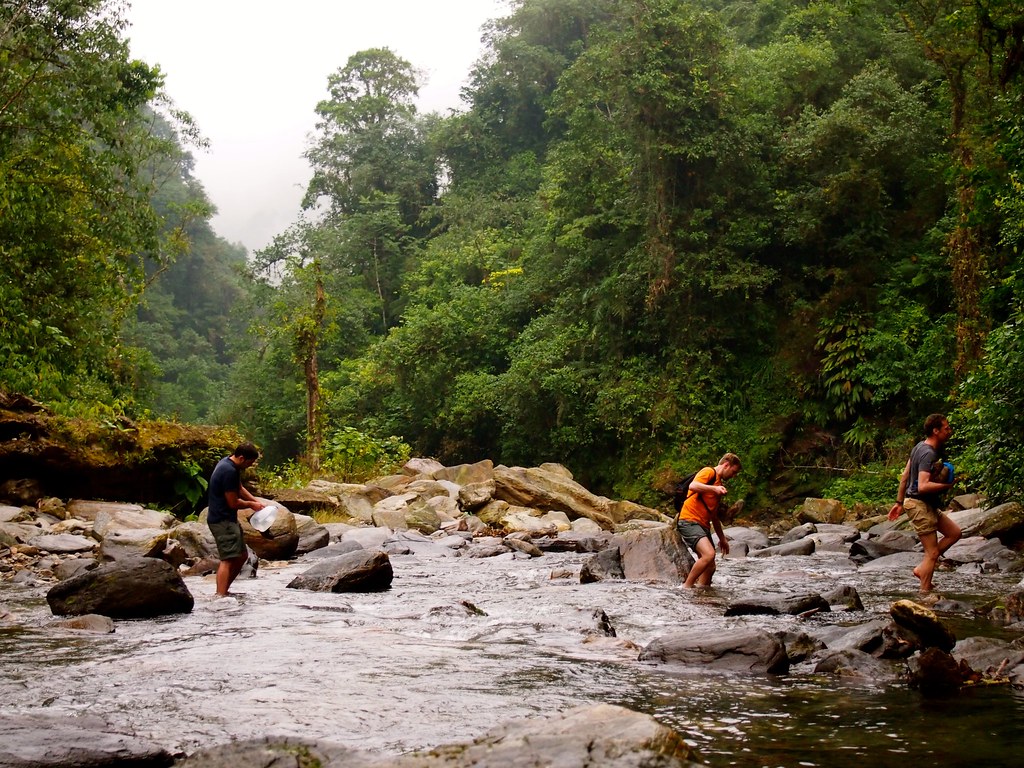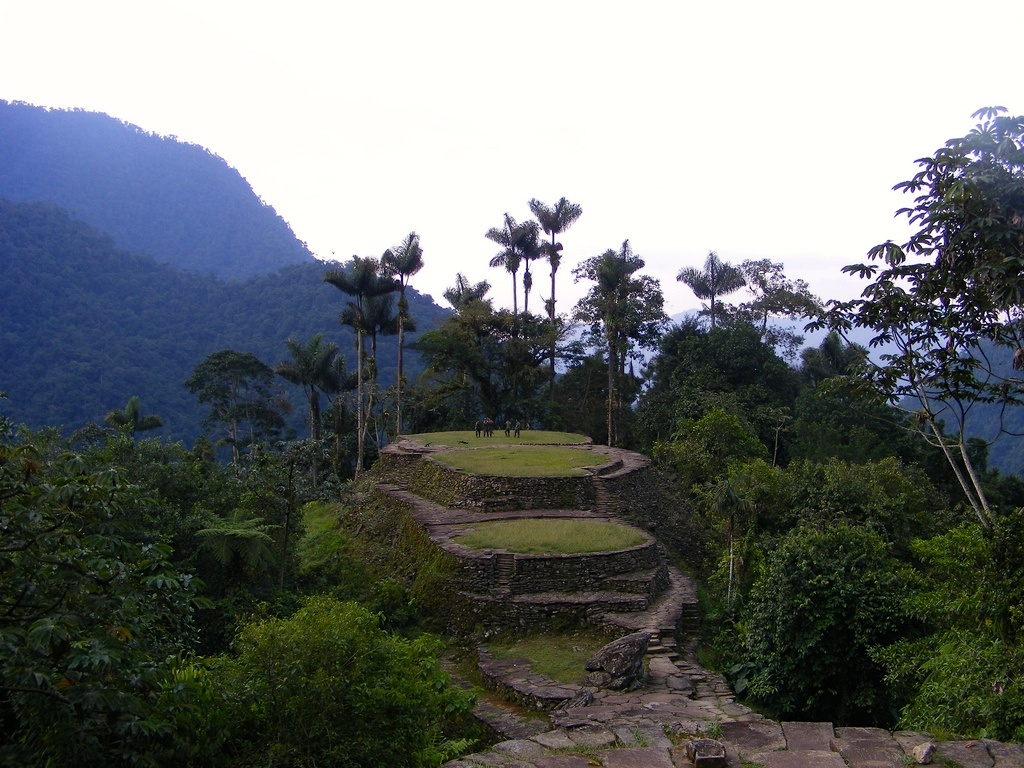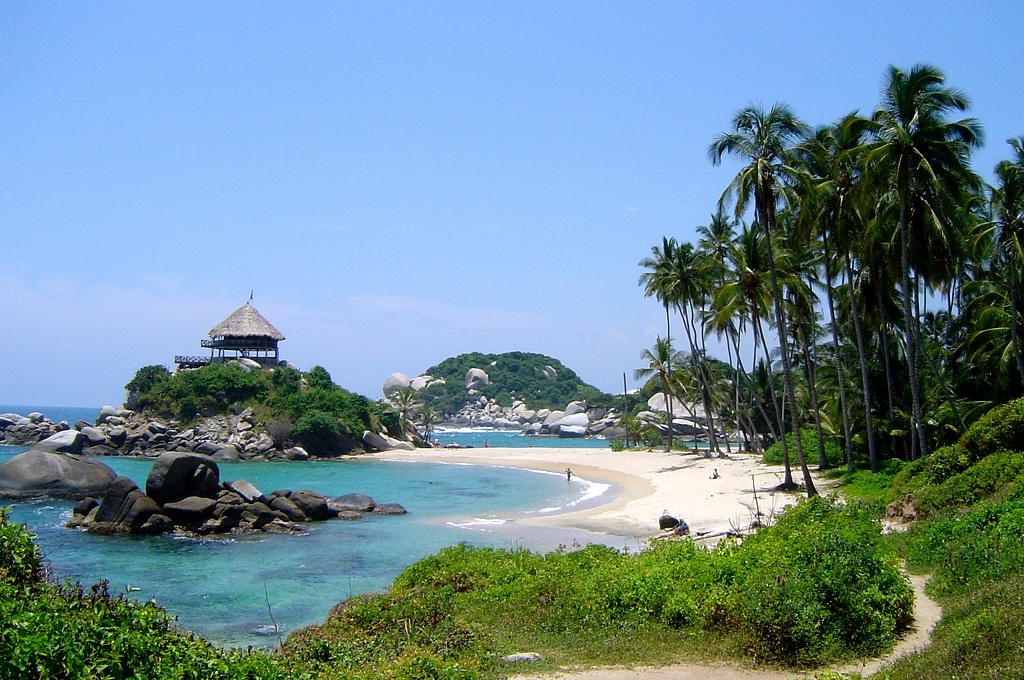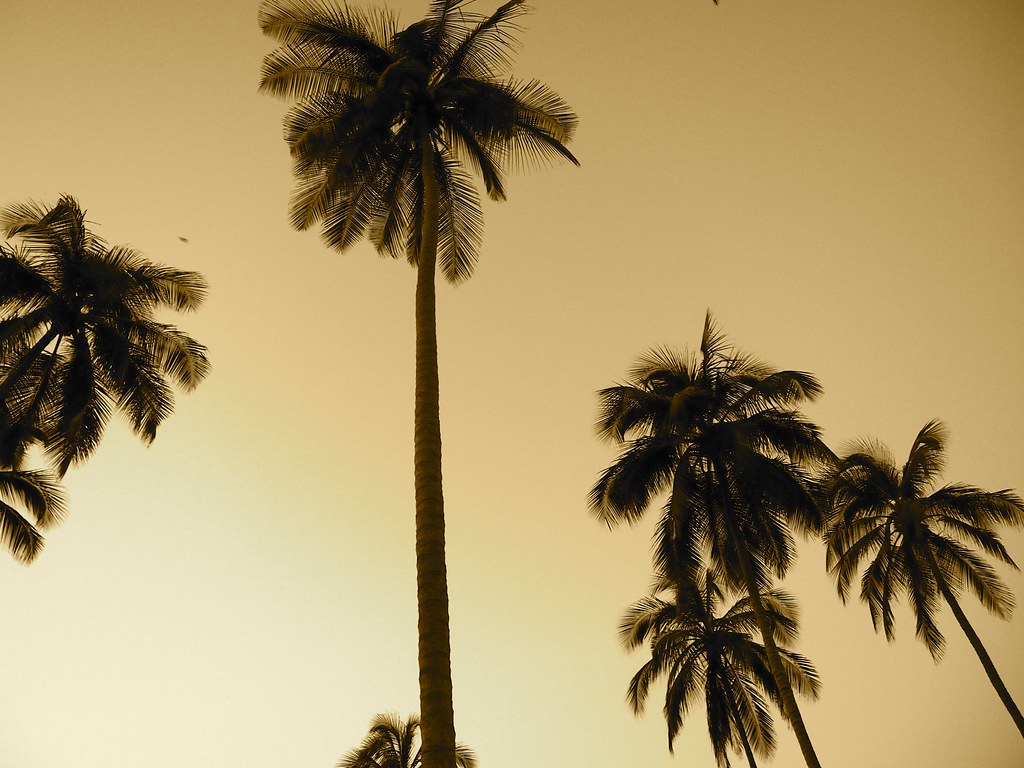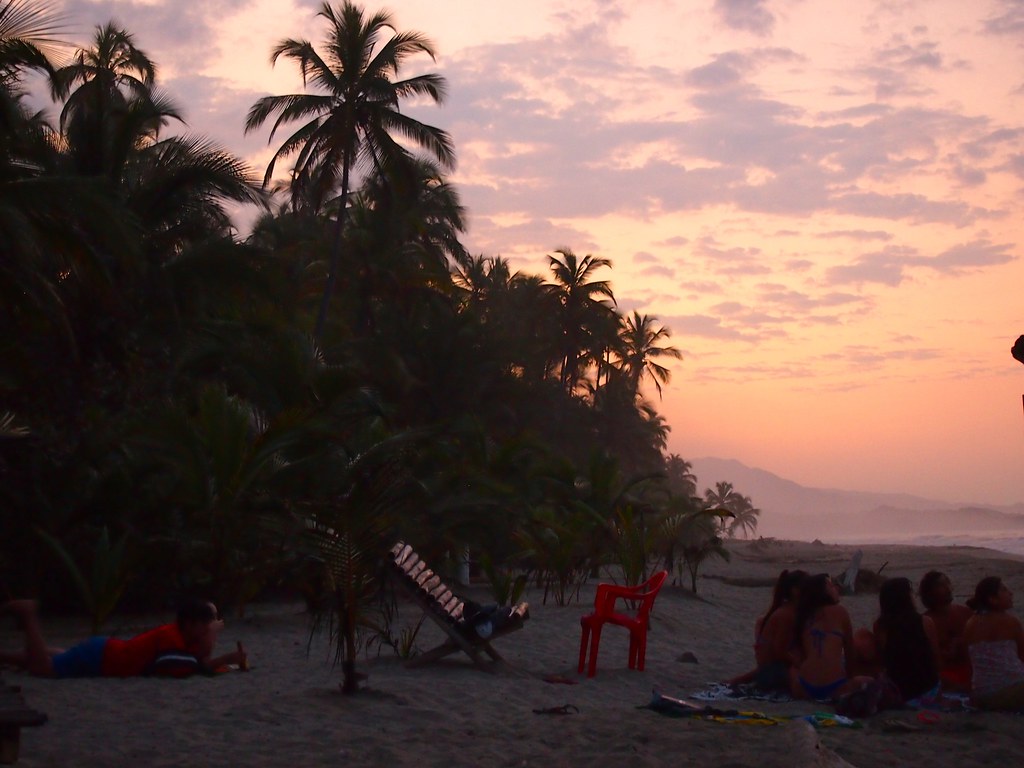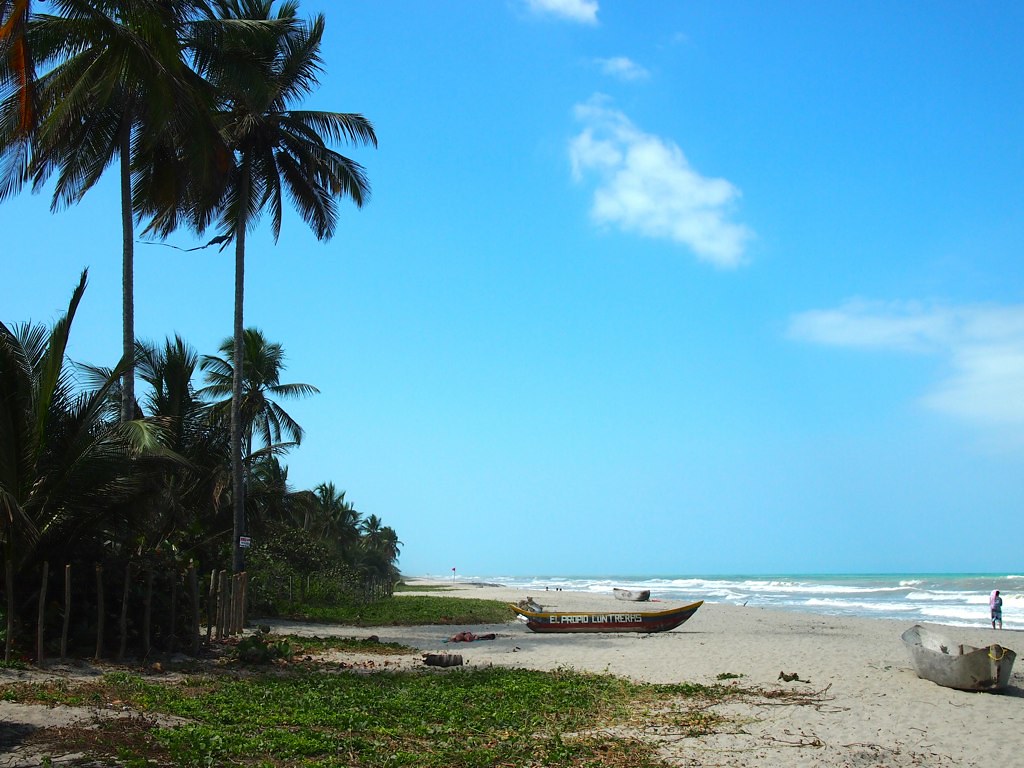Kicking back on Colombia’s Caribbean Coast
First, a quick update from us: Sadly, we are now home from our Big Trip, getting our feet underneath us, and figuring out Life 2.0. Even though we now have to worry again about landing jobs (where is my suit in our storage unit?!) and having responsibilities beyond finding local dives (whose turn is it to walk Heidi, again?), we are committed to keeping up the blog, so stay tuned for some wrap-up posts.
Stretching east from Cartagena, Colombia’s northern coast spools out like a ribbon of white-sand, blue-water beaches until it dries up near Venezuela. Colorful local buses clanking down a narrow two-lane highway link secluded beaches together. We spent about two weeks meandering our way down this highway, the perfect end to our round-the-world trip. But first, Jordan had to play Indiana Jones.
Jungle Booking It — a hike to the Lost City
With just a month left in our trip Skyler decided to spend a few days in the hammocks of our hostel in Santa Marta polishing up her resume and sending out applications. I decided to disappear into the jungle.
I spent 4 days hiking to Ciudad Perdida (the “Lost City”), a place that was never lost to the indigenous people of the Sierra Nevada mountains and was discovered by outsiders when grave-robbers found it in 1972 while searching for gold. Those grave robbers had good reason — even though Colombia is full of gold and emeralds, the indigenous culture is not materialistic, and the dead are buried here with all of their possessions. Due to it being in FARC-controlled territory, the Lost City has really only been safe for tourists for about a decade.
It was a difficult hike — much tougher than the Inca Trail in Peru that we hiked a few months before — over 44 km with lots of steep climbs and descents and multiple knee-deep river crossings. The most difficult part of it for me, though, was the heat and humidity. Each night we would arrive at our camp — simple A-frame buildings with hammocks and mosquito nets strung up side-by-side — soaked in sweat. Each morning, my fancy quick-dry gear was still soaking wet. The saving grace was the beautiful natural pools at each camp formed by bends in the river that we followed. Draped by jungle vines, waterfalls, and giant boulders, the cold water was the perfect end to each day’s hike.
We reached the city itself on Day 3 (alternatively, the 5 day version which costs the same price reaches the city on day 4). Since I had booked through Wiwa Tours, an agency owned and operated by the indigenous people, I was fortunate to have an indigenous guide showing us through his sacred city. Ciudad Perdida was built around 800 AD, making it 650 years older than Machu Picchu. It’s also far more remote and the ruins are more spread out — 169 terraces connected by tiled roads, now mostly covered by the jungle. It was covered in thick fog while we were there, adding to the mysterious atmosphere.
Although the city itself is no Machu Picchu, it was a fun and challenging 4 day hike in the jungle. If you’re reading this and thinking about doing it yourself, I have a few tips:
- The clothes you hike in will never dry overnight. I recommend saving a clean, dry set of clothes to sleep in.
- Despite the heat during the day, it gets quite chilly at night. Each of the camps gave us smelly blankets but I also recommend packing a jacket (I didn’t and really regret it).
- The food was plentiful and mostly quite good, but was a little carb-heavy for me. Pack some nuts or other high-energy snacks to supplement.
- You could get by without bringing any extra money — plenty of snacks and all the water you need is provided. But, there are little stores along the way and at each camp selling sodas, beer, candy, etc. None of it is especially expensive. And you definitely deserve a cold beer at the end.
- I didn’t sleep especially well in the hammocks, neither did most of our group. We were all happy we decided on the 4 day trek instead of the 5 day for that reason alone.
- Especially on the 5 day trek, there is lots of downtime. Bring a book and a deck of cards.
- Each of the basic camps along the way was well equipped and had clean western-style toilets, showers, and awesome swimming holes. A huge difference from the nasty Inca Trail toilets! Evidently we have our American tax dollars to thank for this. The facilities on the trek were all built with funds from the US Foreign Aid office. We even met a Peace Corps volunteer working out there.
- I went with Wiwa Tours because it was the only agency owned and operated by the indigenous people of the Sierra Nevada de Santa Marta. One night, we stayed at a camp where our guide lived with his family and we met his wife and kids. The other groups all seem to have similar experiences, though, and all charge the same price regardless of if you choose the 4 or 5 day option (600,000 COP as of January 2014).
- I booked the trek in Santa Marta the night before I started, no need to book in advance.
- You’ll be tired, sweaty, dirty and smelly when you get back. We splurged on a nice private room with AC at the Dreamers Hostel (has a pool!) in Santa Marta. It was an excellent decision.
- Don’t forget bug spray. You can buy super-intense 50% DEET spray here in Colombia, but keep it in a plastic bag because it eats through everything.
And now back to Skyler…
Amor on a moto
While Jordan was off in the wilderness, I decided to explore Minca with our friend Sally one day. Minca is a dusty one-street mountain town near Santa Marta famous for a nearby waterfall and coffee farm. Sally and I wandered around and visited a shop selling chocolate made on premises and grown up the hill, but we’d come for coffee! The coffee finca, however, was a two hour walk uphill from Minca. Our only other option was to take one of the moto taxis driven by local teenage boys.
We negotiated the price, climbed on, and they rocketed off. My driver, as he gunned us up twisty dirt roads, kept turning around to shout back compliments and questions in Spanish in true Colombian style: “Where are you from? You are so beautiful! Do you have a husband? Do you have a boyfriend? Yes, a husband is different from a boyfriend! Would you like a boyfriend? How old are you? I’m 21, no, 25!”
All the while I’m holding on to this boy for dear life, yelling at him to keep his eyes on the road, but I think it came out as “Our eyes are in the street!”
Reply: My eyes are on you!
Me: I know!
We got there, somehow, safe and sound. The coffee was excellent.
The more the merrier?
Tayrona National Park is one of the crown jewels of Colombia. A beautiful beach awaits at the end of a two-hour hike through jungles, palm groves, and coastline. We heard people swooning over it, talking about nights stargazing and sleeping in hammocks. While Tayrona has luxe and expensive Eco-huts, there are also three main campsites for us budget travelers. We chose to camp on Cabo San Juan, the site farthest from the entrance and situated on a breathtaking beach. We’re thinking, this is going to be great!
The day started on a promising note, as a friendly Colombian family picked us up inside the park entrance and gave us a lift down to the start of the trail, saving us an hour and a half of sweaty work. We set off for Cabo through truly stunning scenery, and even spotting a monkey and a curious red squirrel. We arrived around noon, ready to claim our hammock and relax on the beach.
The supremely uninterested man behind the help desk told us that we had to come back at 2 to see what they had available that night. We turn around to see the beautiful beach jam-packed with what must have been the entire population of Argentina. Uh-oh, did we just hike for two hours merely to be stranded without a place to sleep tonight? Two hours later, commence vicious scrum for remaining accommodations — no more hammocks, and no more tents with mats, we were lucky to get a tent requiring us to sleep on the hard ground.
Due to the crowds, there was a line for everything, for the bathrooms, and especially to get (overpriced, warmed over) food. In a stroke of penny-pinching genius, we had brought our own food, feasting on tuna, crackers, fruit, and PB&Js whenever we wanted.
The park was still lovely, and a worthwhile stop, but one night was more than enough.
Coconuts for the taking
Our next stop was Costeño Beach, a secluded place about half an hour east of Tayrona. The bus dropped us off and it was another 30 minute walk through palm groves to reach the only place out there: Costeño Beach Eco Lodge and Surf Camp. Isn’t it hard to believe this beautiful stretch of Caribbean beach is so entirely deserted and undeveloped? And what luck: the day we arrived, the owner’s Irish uncles had decided to roast an entire pig for dinner that night!
There’s not much to do on Costeño beyond surfing, sunbathing, collecting fresh coconuts in order to hack them open for their innards, and walking down to a beautiful freshwater lagoon. And that’s sort of the point. It’s one of those places that we ask ourselves: Wonder what this place will look like in 10 years?
Palomino dreamin’
Tucked in between the ocean and the Sierra Nevada mountains, we actually liked this beach even better than Costeño! While still off the beaten path, Palomino has some options when it comes to sleeping and eating, the beach is prettier, and there’s an excellent tubing trip nearby. We had to do it, so one day we grabbed some inner tubes, hopped on back of a moto (not another one!), hiked through jungle for half an hour and finally came upon a pristine river. We floated down the mountain in cold, clear water through the jungle with exotic birds flitting by, including floating through an entire group of hummingbirds at one point! The river ends spectacularly at the Caribbean Sea, and from there it’s a quick walk back down the beach to town.
Many of the beachfront restaurants in Palomino have excellent juices and seafood. We had fresh juices on the beach every afternoon (maybe with a little local ron (rum) added in) and ended every day with freshly caught fish with plantains, rice, and plenty of lime. We stayed here for four nights and could have lingered and lingered….
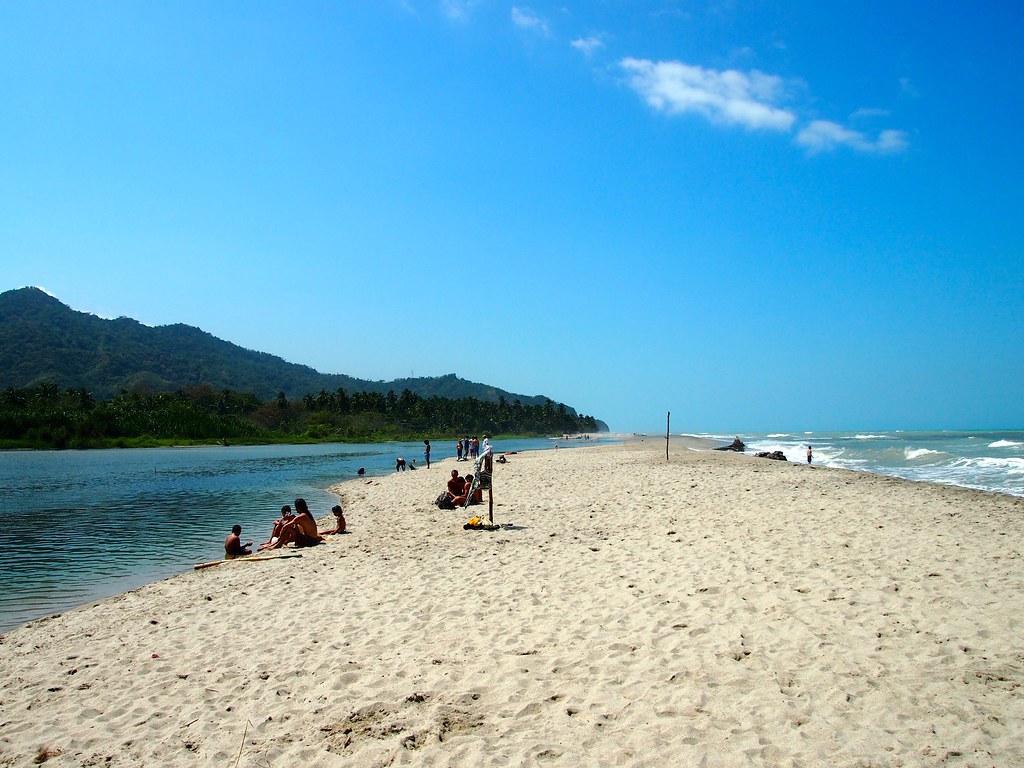
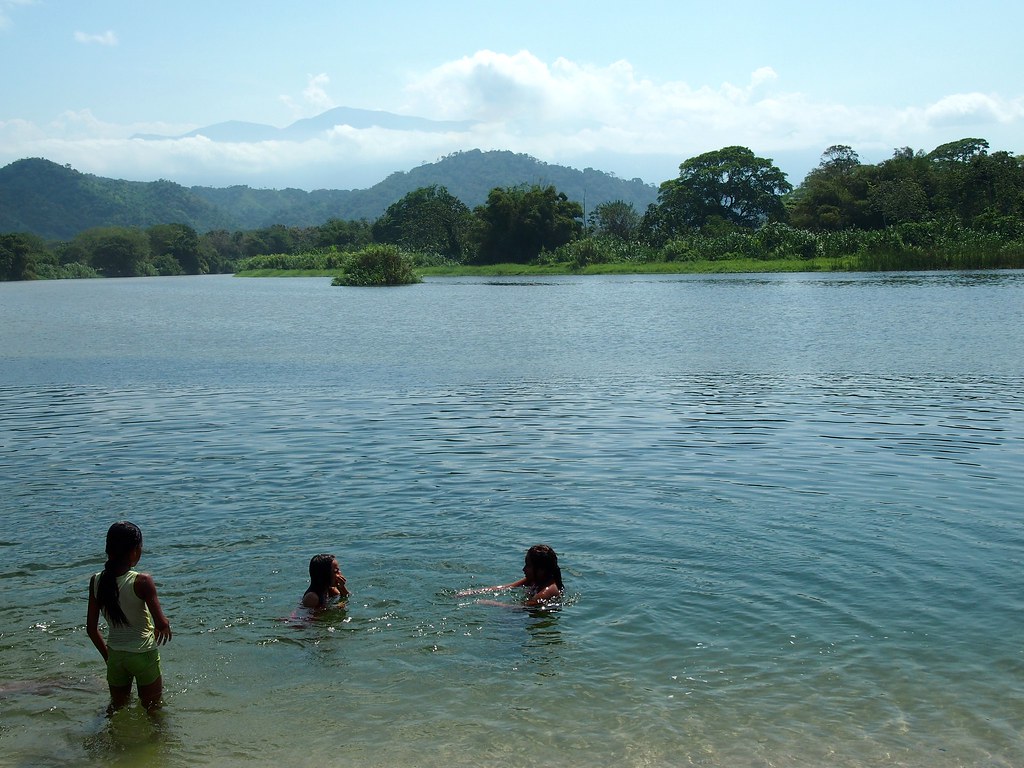
Alas, this was the last leg of our trip. Unbelievable! Colombia, with its festive spirit and friendly people, ended up being one of our favorite countries of the entire trip, and we left it with a heavy heart.
Next, it was off to our surprise final destination, where we socialized with flamingos and ate baskets full of shrimp. Stay tuned ….

